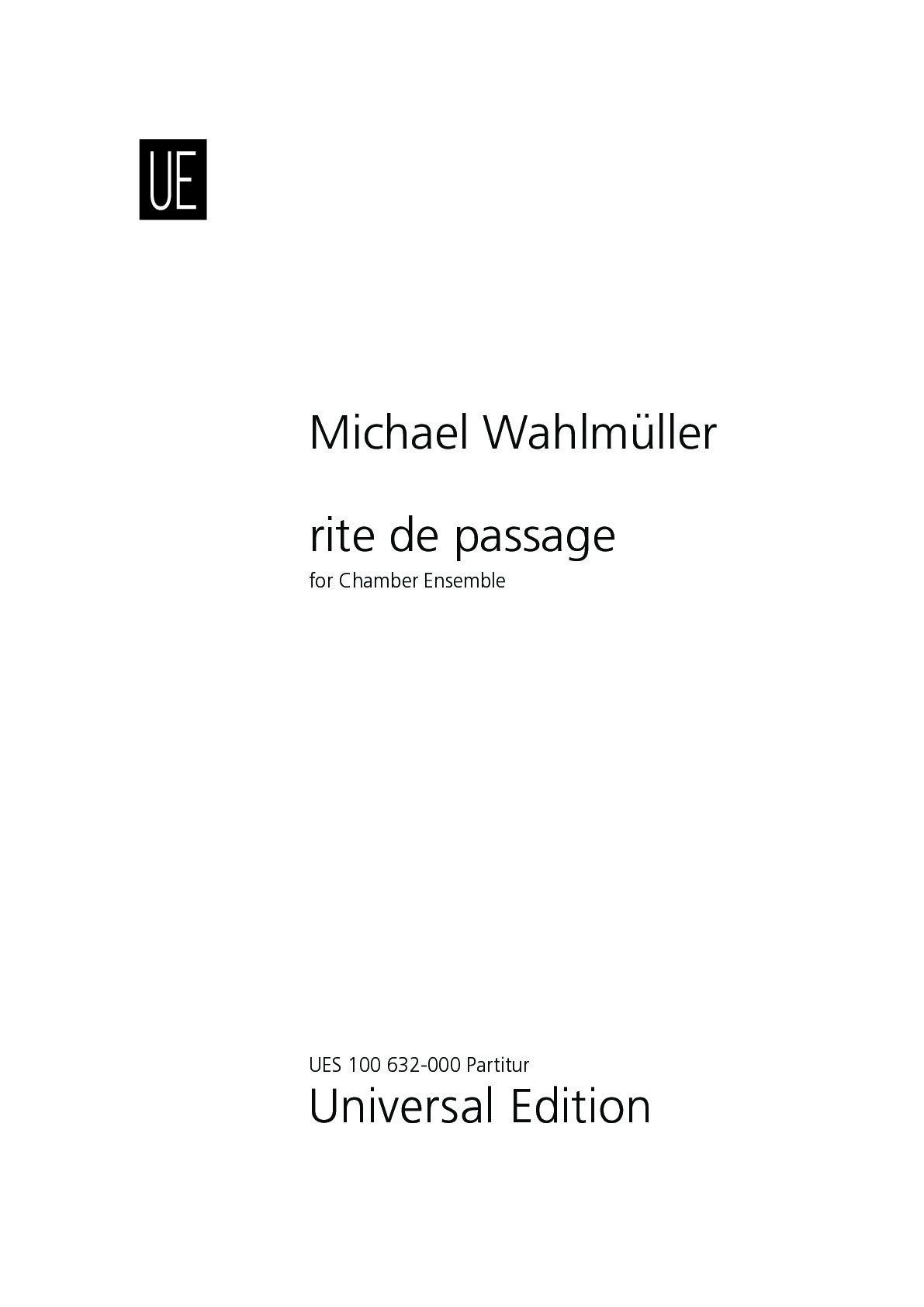

Michael Wahlmüller
rite de passage
Short instrumentation: 1 0 1 1 - 1 1 1 0, perc, hp, str
Duration: 15'
Instrumentation details:
flute
clarinet in Bb
bassoon
horn in F
trumpet in Bb
trombone
percussion
harp
violin I
violin II
viola
violoncello
double bass
rite de passage
Printed/Digital
Translation, reprints and more

Michael Wahlmüller
rite de passageOrchestration: für Kammerensensemble
Type: Dirigierpartitur
Sample pages
Video
Work introduction
The chamber music ensemble work "rite de passage" was composed around the turn of the year 2014/15 and specifically conceived for a concert with the ensemble "die reihe".
The title of the composition refers to a book published in 1909 by the French ethnologist Arnold van Gennep, in which he develops and presents a theory that is essential for me: According to his view, there are numerous transitions in the social and cultural life of a human being between two stages of life por social states. He calls these phenomena rites of passage (French: "rites de passage") and divides these ritual performances into three phases: a phase of detachment, which is connected with rites of separation, an intermediate phase, in which mainly threshold or transformation rites take place, and an integration phase, in which rites of affiliation are initiated.
Van Gennep's central concern has thus been to make the intellectual world of his time aware that rituals cannot be studied in isolation, from a fragmentary perspective or detached from their social context. More than a hundred years later, but nevertheless with the perspective of a "turn of the century mood", these thoughts inspired me to my work, which formally and structurally definitely refers to van Gennep's theory and especially to the three-phase model explained earlier.
Central compositional, theoretical foundations of my personal style, which of course also appears in this piece, are to treat tonality and atonality equally, to use rhythm and meter as a formal principle, and to synchronize conventional notation with aleatoric elements in a world that is constantly characterized by omnipotent communication, globalization, and the demand for multi-tasking.
In my opinion, it is only through all those musical methods just described that such rites of passage as van Genneps describes constantly arise; they are the ones by which my compositional work, generally speaking, obtains orientation in a stylistically pluralistic time.
